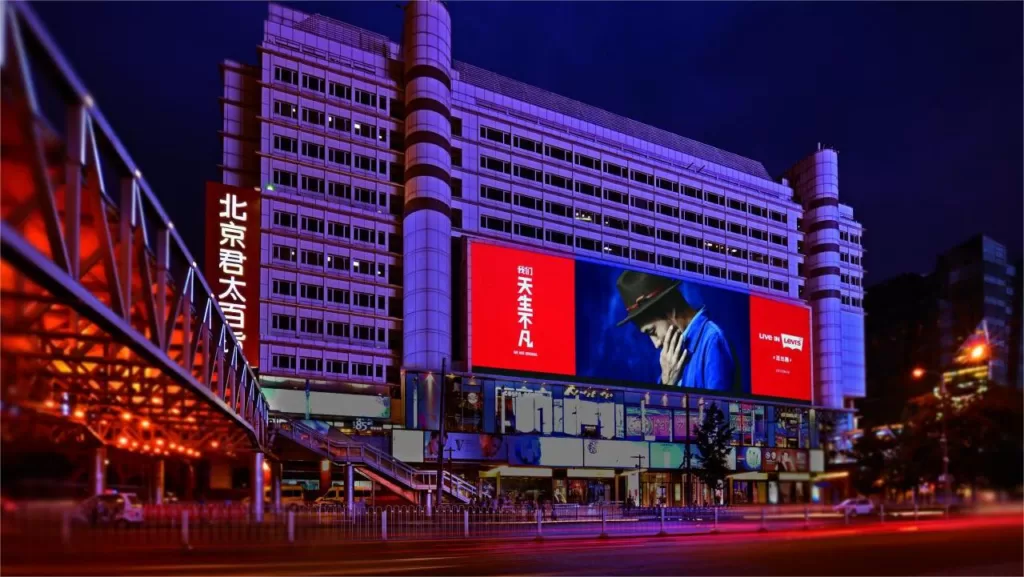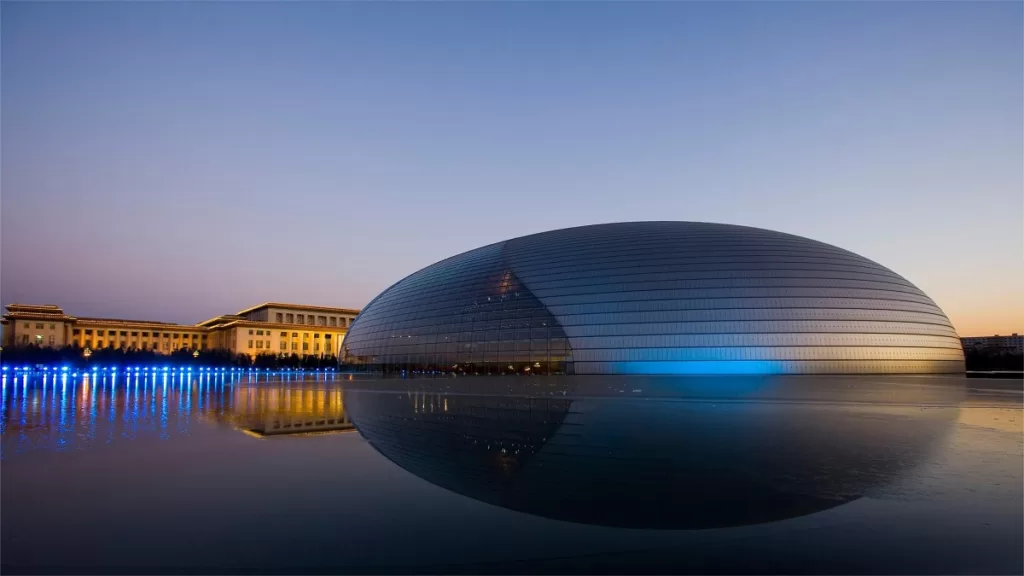Tiananmen Square (天安门广场), located in Dongcheng District, Beijing, along East Chang’an Street, is the largest city square in the world. It has undergone multiple modifications and now stretches 880 meters from north to south and 500 meters from east to west, covering an area of 440,000 square meters. This vast space can accommodate up to one million people for grand gatherings.
At the heart of Tiananmen Square, along Beijing’s central axis, stand several significant landmarks from north to south: the National Flagpole, the Monument to the People’s Heroes, the Chairman Mao Memorial Hall, and the Zhengyangmen Gate Tower. These monuments are symmetrically aligned, reflecting the grandeur and importance of the square in China’s history.
Tiananmen Square gained prominence on October 1, 1949, when Chairman Mao Zedong proclaimed the founding of the People’s Republic of China from the Tiananmen Gate Tower. Since then, it has become a symbol of the nation. The square has witnessed numerous historic events, embodying the indomitable revolutionary spirit and the heroic courage of the Chinese people. It was the site of significant movements such as the May Fourth Movement, the December 9th Movement, and the May 20th Movement, all of which left a profound impact on China’s modern revolutionary history.
In addition to its historical significance, Tiananmen Square is a sacred venue for major national celebrations, grand gatherings, and state ceremonies. It has hosted significant events such as the celebrations for the 100th anniversary of the founding of the Communist Party of China, the 35th, 50th, 60th, and 70th anniversaries of the founding of the People’s Republic of China, and the commemoration of the 70th anniversary of the victory in the Chinese People’s War of Resistance Against Japanese Aggression and the World Anti-Fascist War.
Tiananmen Square attracts a large number of tourists year-round. One of the most popular events is the flag-raising ceremony, which draws numerous spectators daily. During the National Day celebrations in 2023, over 300,000 people gathered to witness this solemn event. The square remains a powerful symbol of China’s enduring history and its people’s relentless pursuit of democracy, freedom, and resistance against foreign aggression and oppressive rule.
Table of Contents
- Basic Information
- Location and Transportation
- Highlights of Tiananmen Square
- Map of Tiananmen Square
- Popular Restaurants near Tiananmen Square
- Best Time to Visit Tiananmen Square
- Historical Events at Tiananmen Square
- Useful Tips Summarized from Reviews
- Attractions near Tiananmen Square
Basic Information
| Website | http://tamgw.beijing.gov.cn/ |
| Estimated length of tour | 0.5 – 1 hour |
| Ticket Price | Tiananmen Square: free, but you have to book online at least one day in advance. The website address is yuyue.tamgw.beijing.gov.cn Tiananmen Tower: 15 RMB for adults; 5 RMB for senior citizens over 70, and free for children under 1.2 meters. |
| Opening hours | Tiananmen Square: open an hour before sunrise and close at sunset. The times vary from day to day. Tiananmen Tower: 08.30 – 16.00 (November 1st – March 31st); Last admission: 15.30 08.30 – 17.00 (April 1st – October 31st); Last admission: 16.30 |
Reservation Tips:
Since 2021, visiting Tiananmen Square requires a reservation in advance. You can book your visit up to 10 days ahead of time through several methods:
- WeChat Mini-Programs: You can use “Tiananmen Square Reservation Service” or “Jingchengzhiyue.”
- Mobile Apps: Reservations are available via the “Beijing Tong” app, “Beijing Daily” app, and BRTV app.
- Official Website: Visit the “Tiananmen Square Reservation Service Section” on the Tiananmen Management Committee’s official website.
Additionally, if you have a reservation for any of the following attractions, you can visit Tiananmen Square on the same day without needing a separate ticket:
- Chairman Mao Memorial Hall
- National Museum of China
- The Forbidden City
- Zhongshan Park
- Beijing Workers’ Culture Palace
Location and Transportation
Tiananmen Square is located right at the center of Beijing. There is very convenient public transport leading there, and the taxi cost is pretty affordable.
Bus: Take No.2 or 120 and hop off at Tiananmen West or East Stop, and walk for about 200 meters to reach the entrance.
Subway: take subway line 2, get off at Qianmen station, and walk about 300 meters to reach the entrance.
Highlights of Tiananmen Square
Monument to the People’s Heroes
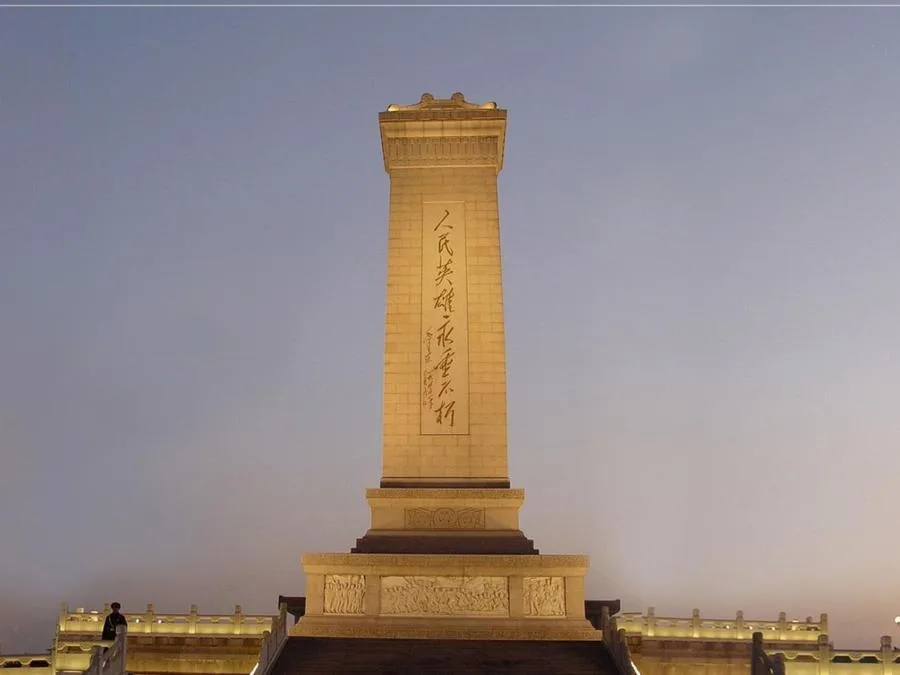
Located at the heart of Tiananmen Square, the Monument to the People’s Heroes is a grand structure dedicated to those who sacrificed their lives for the Chinese revolution. The decision to build this monument was made during the first plenary session of the Chinese People’s Political Consultative Conference on September 30, 1949. Construction began on August 1, 1952, and was completed in April 1958.
The monument stands 37.94 meters tall and consists of two platforms, two Sumeru bases, a stele body, and a capstone. It spans 50.44 meters wide from east to west and 61.54 meters long from north to south, comprising over 17,000 pieces of granite and white marble. The front of the stele features an inscription by Chairman Mao Zedong, “Eternal Glory to the People’s Heroes,” written in eight large gilded characters. The back bears a 150-character inscription authored by Mao Zedong and engraved by Premier Zhou Enlai. The sides of the monument are adorned with wreath reliefs depicting five stars, pine branches, and flags, symbolizing the resilience and unity of the Chinese people.
Chairman Mao Memorial Hall

Situated within Tiananmen Square, the Chairman Mao Memorial Hall covers an area of 5.72 hectares with a total construction area of 33,867 square meters. Construction of the hall began in November 1976, and it was inaugurated and opened to the public on September 9, 1977. The memorial hall consists of the Northern Hall, the Viewing Hall, and the Southern Hall.
The Viewing Hall, located at the center, is where visitors can pay their respects to Mao Zedong. In this hall, Mao Zedong lies in state, dressed in a grey Zhongshan suit and draped with the flag of the Communist Party of China, within a crystal coffin. The base of the crystal coffin, made of Taishan black granite, is adorned with the emblems of the Communist Party, the People’s Republic of China, and the People’s Liberation Army.
The memorial hall showcases numerous photographs, documents, and artifacts that highlight Mao Zedong’s significant contributions to China’s revolutionary and developmental history. It also chronicles the efforts and struggles of the Chinese people under the leadership of the Communist Party to build a new China.
Zhengyangmen Tower
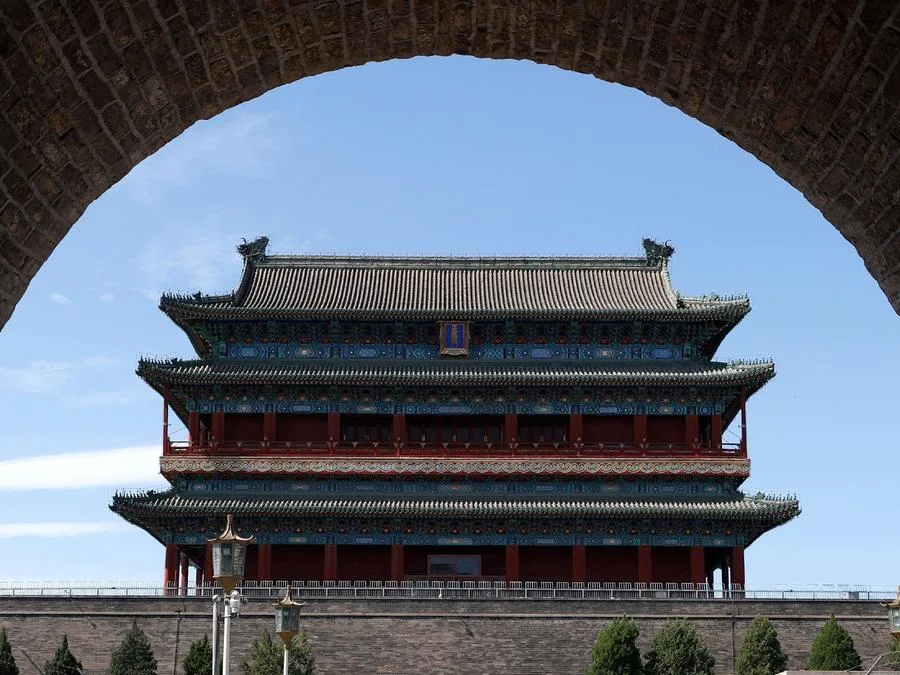
Zhengyangmen, commonly known as Qianmen, is a grand gate located at the southern end of Tiananmen Square. Originally named Lizhengmen, it was the southern gate of the inner city of Beijing during the Ming and Qing dynasties. Built in 1419 during the reign of the Yongle Emperor, it was one of the nine gates of old Beijing.
Zhengyangmen is an impressive ancient defensive structure consisting of the gate tower, the arrow tower, and the barbican. It is a well-preserved example of ancient Chinese military architecture. The gate tower and arrow tower are particularly notable for their grand scale and elaborate design. The gate tower houses the Beijing Folk Customs Museum, offering visitors a glimpse into the cultural heritage of the city.
Tiananmen Tower

Tiananmen, also known as the Gate of Heavenly Peace, is the iconic gate located at the northern end of Tiananmen Square. It is positioned at the intersection of Beijing’s central axis and Chang’an Avenue. The gate, including its base and tower, stands 33.7 meters tall and covers an area of 4,800 square meters.
The tower of Tiananmen is a magnificent example of traditional Chinese architecture, with a double-eaved roof covered in yellow glazed tiles. The main ridge of the roof features dragons and phoenixes, while nine mythical beasts line the roof’s corners. Supported by 60 massive pillars, the structure is adorned with intricate carvings of lotus flowers, jewel motifs, and auspicious designs. The base of the tower is surrounded by white marble balustrades with lotus petal motifs.
On the façade of Tiananmen, the national emblem of the People’s Republic of China is prominently displayed, along with a large portrait of Chairman Mao Zedong. Flanking the portrait are the slogans “Long Live the People’s Republic of China” and “Long Live the Great Unity of the World’s Peoples.”
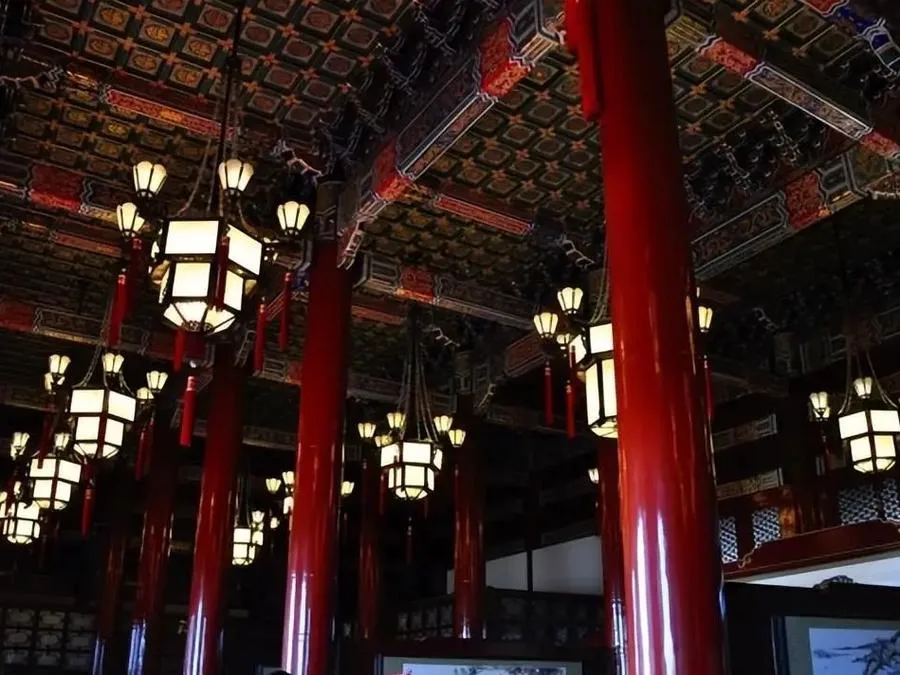
Tiananmen was originally built in 1417 during the reign of the Yongle Emperor and was named “Chengtianmen” (Gate of Heavenly Succession). It was rebuilt in 1651 after being twice destroyed by fire and was renamed Tiananmen, meaning “Gate of Heavenly Peace.” This name signifies the emperor’s divine right to rule and the aspiration for peace and stability.
Tiananmen has been the site of significant national ceremonies throughout history, especially during the Ming and Qing dynasties. The most solemn ceremony held here was the issuance of imperial edicts, known as “Golden Phoenix Proclamations,” which took place during major events such as the emperor’s ascension to the throne and the empress’s investiture.
Tiananmen Huabiao (Ornamental Columns)
Tiananmen Square features two pairs of marble columns known as Huabiao, also called “watching poles.” These columns were erected in 1420 during the Ming Dynasty and stand 9.57 meters tall with a diameter of 0.98 meters, each weighing over 20 tons. The columns are intricately carved with cloud and dragon motifs, exuding an air of dignity and solemnity. At the top of each column is a “cloud plate,” which is crowned by a mythical stone beast called “hou.”
The pair of Huabiao in front of Tiananmen face south and are known as “Wangjun Gui,” which means “expecting the emperor’s return.” They symbolize the hope that the emperor, when he travels, will not stay away for too long and will return promptly to attend to state affairs. The pair behind Tiananmen face north and are called “Wangjun Chu,” meaning “expecting the emperor to go out.” These symbolize the wish for the emperor to leave the palace often to understand the people’s needs and hardships.
Stone Lions

In front of Tiananmen, there are two pairs of stone lions, which are traditional Chinese symbols of protection. These lions are distinctive, with the male lion on the left and the female on the right. One of the stone lions on the right side of the bridge leading to Tiananmen bears a scar on its belly. According to legend, this scar was caused during the Ming Dynasty when a general named Li Guozhen, fleeing from the peasant rebel leader Li Zicheng, hid behind the lion. Li Zicheng discovered him and struck at him with a sword, inadvertently injuring the lion.
Another story connects the scar to the invasion of Beijing by the Eight-Nation Alliance. It is said that during this historical event, the stone lions came to life and fought against the invaders. The scar on the lion is thus a testament to its bravery and resistance against the foreign forces.
Jinshui Bridge (Golden Water Bridge)
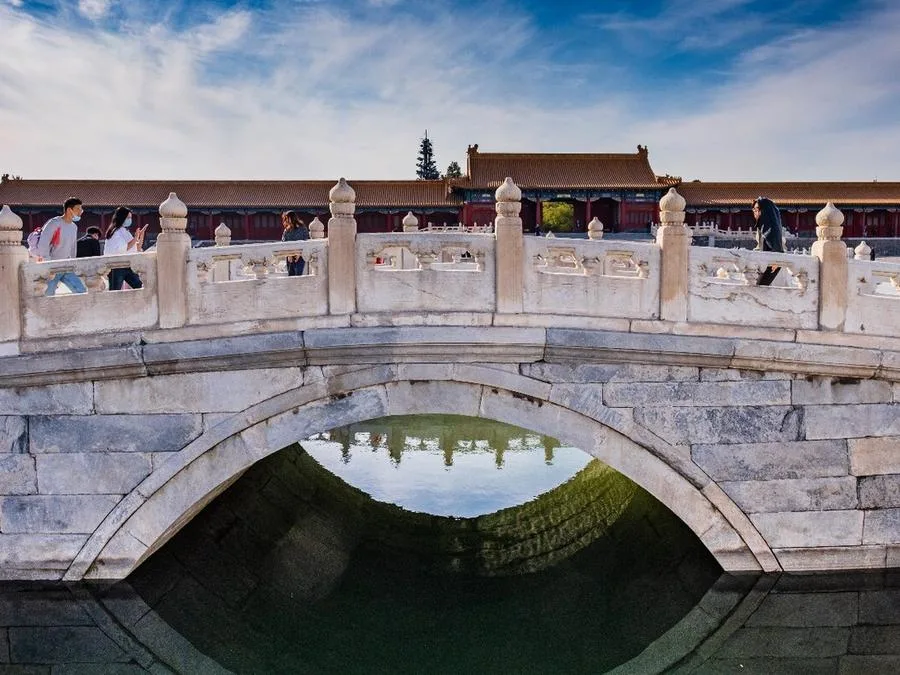
Jinshui Bridge, originally constructed during the Ming Dynasty’s Yongle era and rebuilt in the Qing Dynasty’s Kangxi era (1690), consists of both Inner and Outer Jinshui Bridges. The Inner Jinshui Bridge spans the Jinshui River in front of the Taihe Gate Square of the Forbidden City, comprising five single-arched Han white marble bridges. The Outer Jinshui Bridge, located over the Outer Jinshui River, features seven triple-arched Han white marble bridges.
In front of Tiananmen, the Outer Jinshui Bridge includes five bridges, with the central one known as Yulu Bridge, reserved exclusively for the emperor’s passage. Adjacent to Yulu Bridge are Wanggong Bridges, accessible only to princes of the imperial family. At the eastern and western ends are Pingji Bridges, designated for high-ranking officials of the third rank and above. Outside the gates of the Imperial Ancestral Temple and the Altar of Land and Grain, the Outer Jinshui River hosts two Gongsheng Bridges for officials of the fourth rank and below.
Great Hall of the People
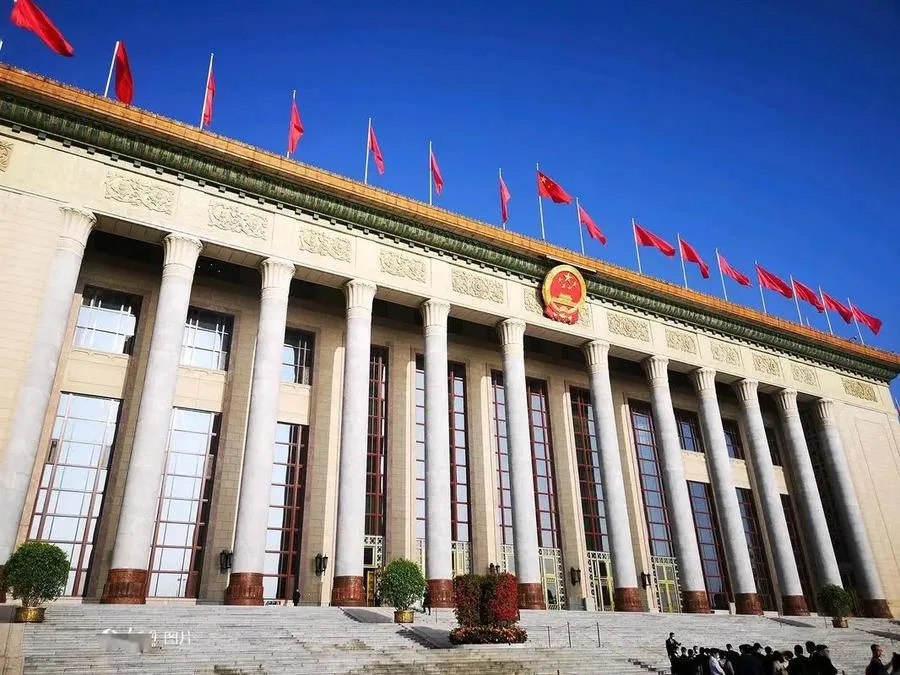
Situated on the west side of Tiananmen Square, the Great Hall of the People is a monumental structure shaped like the Chinese character for “mountain.” With a total floor area of 171,800 square meters and surrounded by 134 columns in its periphery, construction began in October 1958 and was completed in September 1959 in just over ten months.
As the foremost among the “Ten Great Buildings” erected to commemorate the tenth anniversary of the founding of the People’s Republic of China, the Great Hall of the People serves as a pivotal venue for national and international events. It hosts significant gatherings of state affairs and diplomatic activities and is the primary location where the highest organ of state power, the National People’s Congress, convenes its sessions. Additionally, it houses the office of the Standing Committee of the National People’s Congress.
National Museum of China

Located on the eastern side of Tiananmen Square, the National Museum of China stands as a premier institution for preserving and showcasing China’s rich cultural heritage. Its origins trace back to the establishment of the National History Museum in 1912, shortly after the founding of the Republic of China. In 2003, the museum was restructured by merging the Museum of Chinese History and the Museum of the Chinese Revolution to create the National Museum of China as we know it today.
The National Museum of China is a vast repository of China’s historical and cultural artifacts, boasting over 1.43 million items in its collection. These items span from ancient relics to contemporary works, offering a comprehensive overview of Chinese civilization. The museum’s exhibits cover a wide range of categories, including oracle bones, bronze vessels, porcelain, jade artifacts, gold and silver objects, coins, Buddhist statues, ancient books, inscriptions, stele rubbings, tombstones, seals, calligraphy, painting, sculpture, lacquerware, brick and stone carvings, enamelware, glassware, textiles, crafts, historical photographs, ethnic artifacts, folk objects, and revolutionary memorabilia.
Zhongshan Park
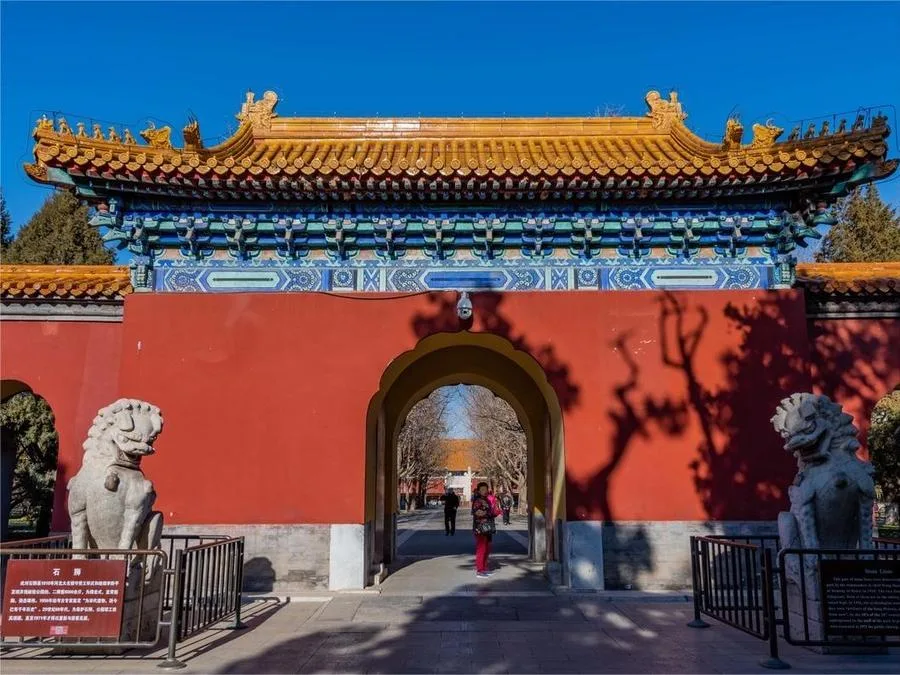
West of Tiananmen Square, Zhongshan Park is a classic example of a historical public garden with deep cultural significance. Covering an area of 23.8 hectares, Zhongshan Park was originally established as the Altar of Land and Grain during the Ming Dynasty’s Yongle period in 1420. This altar served as a sacred site for imperial sacrifices to the gods of earth and grain, symbolizing the emperor’s role in sustaining the state’s prosperity.
In 1914, under the guidance of Zhu Qiqian, the Minister of Internal Affairs during the Beiyang Government, the altar was transformed into a public park named Central Park, marking Beijing’s first public garden. This transformation aimed to make the space accessible to the general public, offering a place for leisure and reflection. The park was later renamed Zhongshan Park in 1928 to honor Sun Yat-sen, the revered leader of China’s democratic revolution who passed away in 1925.
Map of Tiananmen Square
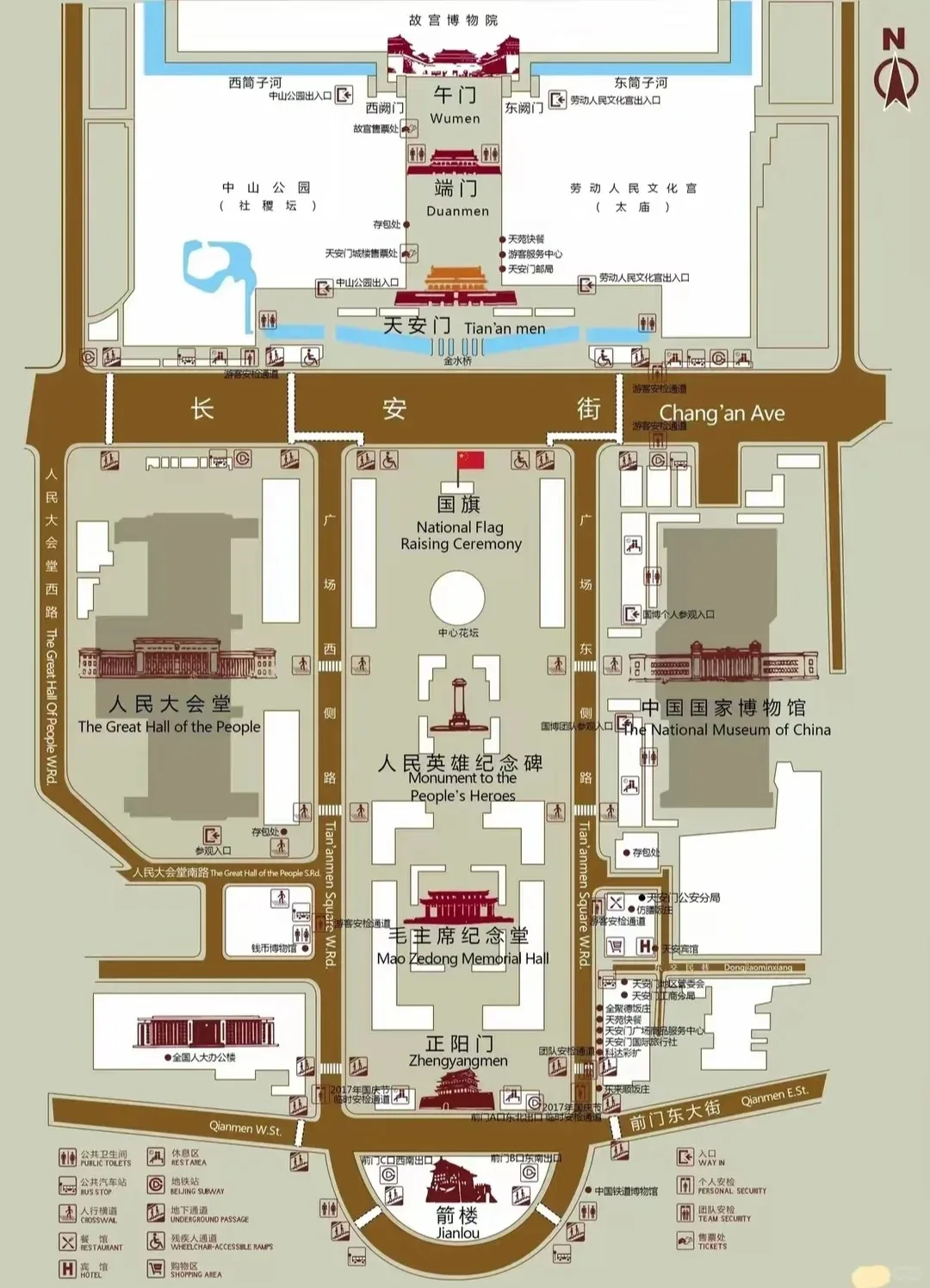
Popular Restaurants near Tiananmen Square
| Restaurant | Description | Specialty | Recommendation |
|---|---|---|---|
| Si Ji Min Fu Roast Duck (四季民福烤鸭) – Dashilan Branch | A well-known restaurant famous for its Peking Duck. It is less crowded compared to the Qianmen and Forbidden City branches. | Peking Duck | For the best experience, get a reservation online at 10:30 AM daily. |
| Mending Meat Pie (门钉肉饼) | Known for its juicy meat pies with crispy crusts. Pair it with Beibingyang soda for a great treat. | Meat Pie | Try the meat pie and “Zha Zi Roast Meat” with Beibingyang soda. |
| Heyan Meat Pie (河沿肉饼) | Offers a variety of dishes including delicious Kung Pao Chicken and refreshing cold dishes. | Kung Pao Chicken, Cold Dishes | Great for affordable and tasty meals for two people. |
| Dong Lai Shun Lamb Skewers (东来顺羊肉串) | Famous for its tender lamb skewers and flavorful grilled dishes. | Lamb Skewers | Enjoy large lamb skewers with good flavor. |
| Ju Bao Yuan Hot Pot (聚宝源涮肉) | A popular hot pot restaurant with more reasonable prices compared to the Yanjing Street branch. | Hot Pot | Located opposite Si Ji Min Fu, great for affordable hot pot dining. |
| Wu Yu Tai Tea House (吴裕泰茶庄) | A traditional tea house offering a variety of tea flavors and delicious ice creams. | Tea Ice Creams (Camellia, Matcha) | Must try the Camellia and Matcha ice creams for a sweet treat. |
Best Time to Visit Tiananmen Square
Seasonal Considerations
Spring (March to May) and autumn (September to November) are the ideal seasons for visiting Tiananmen Square. During spring, the weather is mild, and the blooming flowers add vibrant colors to the square, creating a pleasant atmosphere. In autumn, you can enjoy the crisp air and the beautiful fall foliage, making it a perfect time for sightseeing. Both seasons offer comfortable temperatures and fewer crowds compared to summer and winter, allowing for a more enjoyable and peaceful visit.
Summer (June to August) brings higher temperatures, but it also offers the opportunity to experience the evening light shows at Tiananmen Square. These shows create a spectacular visual experience with illuminated landmarks and festive decorations. If you enjoy the cooler evenings and the lively atmosphere of summer nights, this season can be a great choice. However, be prepared for large crowds and plan your visit in advance to avoid long lines and ensure you get to see the attractions you want.
Winter (December to February) presents a colder climate, but the square’s snowy landscape offers a serene and picturesque setting. If you appreciate winter scenery and the tranquility of a less crowded environment, visiting during this season can be quite enjoyable. Just remember to dress warmly to handle the cold temperatures and potential snow.
Timing Your Visit
To make the most of your visit, consider attending the Flag-Raising Ceremony at dawn, a popular and memorable experience. Check the official schedule for the exact time of the ceremony, as it changes with the sunrise. Additionally, to avoid the crowds, visit the square early in the morning or during the evening. These times are generally quieter and provide a more peaceful experience of Tiananmen Square’s grandeur.
Historical Events at Tiananmen Square
Tiananmen Square, located in the heart of Beijing, has been the site of numerous significant historical events throughout modern Chinese history. From the end of the Qing Dynasty to contemporary political movements, the square has been a stage for pivotal moments that have shaped the nation. Here is a detailed look at some of the most important events that have taken place at Tiananmen Square:
1. The Abdication of the Last Emperor (February 12, 1912)
On February 12, 1912, Empress Dowager Longyu issued the abdication edict on behalf of the young Puyi, the last emperor of the Qing Dynasty, from the balcony of the Tiananmen Gate. This historic event marked the end of over two thousand years of imperial rule in China and the establishment of the Republic of China. The abdication was a crucial step in the transition from the Qing Dynasty to the Republican era, which was a turning point in Chinese history.
2. The May Fourth Movement (May 4, 1919)
On May 4, 1919, thousands of students and intellectuals gathered at Tiananmen Square to protest against the Treaty of Versailles, which awarded Chinese territories to Japan. The demonstration was part of the larger May Fourth Movement, a significant anti-imperialist and nationalist campaign that spread throughout China. This movement played a vital role in the rise of modern Chinese nationalism and laid the foundation for future political developments, including the rise of the Communist Party of China.
3. The March 18 Incident (March 18, 1926)
On March 18, 1926, Tiananmen Square was the site of the tragic March 18 Incident, where thousands of students and citizens gathered to protest against the government’s refusal to meet the demands of the Eight-Nation Alliance. The protestors were met with violence when government troops fired into the crowd, resulting in the deaths of 47 people and injuring over 200 others. This incident highlighted the deep-seated grievances of the Chinese people and was a catalyst for further political activism in the country.
4. The December 9th Movement (December 9, 1935)
On December 9, 1935, thousands of students from Peking University and other institutions gathered at Tiananmen Square for the December 9th Movement. This anti-Japanese protest was part of a broader national campaign against Japanese aggression in North China and the ongoing Chinese Civil War. The demonstrators called for national unity against Japanese imperialism and demanded that the Nationalist government prioritize the fight against Japan over internal conflicts.
5. The Founding of the People’s Republic of China (October 1, 1949)
One of the most iconic events in Tiananmen Square’s history occurred on October 1, 1949, when Chairman Mao Zedong proclaimed the founding of the People’s Republic of China. From the balcony of the Tiananmen Gate, Mao declared the establishment of a new socialist state, marking the end of the Chinese Civil War. This momentous occasion was marked by a grand military parade and the raising of the first Five-Star Red Flag of the new republic. The event symbolized the beginning of a new era for China under Communist rule.
6. The Celebration of Beijing’s Successful Olympic Bid (July 13, 2001)
On July 13, 2001, Tiananmen Square was the center of celebrations for Beijing’s successful bid to host the 2008 Summer Olympics. The announcement was met with immense national pride and joy as it was seen as a significant achievement for China on the global stage. The celebration included performances and speeches that highlighted China’s growing influence and ambition.
7. The Sichuan Earthquake Memorial (May 21, 2008)
On May 12, 2008, a devastating earthquake struck Sichuan Province, resulting in massive loss of life and destruction. In honor of the victims, Tiananmen Square was the site of a national memorial event on May 21, 2008, where the Chinese flag was lowered to half-mast for the first time for a public commemoration. This solemn occasion was a moment of national mourning and solidarity with the earthquake survivors.
8. The Opening Ceremony of the 2008 Beijing Olympics (August 8, 2008)
On August 8, 2008, Tiananmen Square was part of the grand opening ceremony for the 2008 Beijing Olympics. The event featured spectacular performances and fireworks, symbolizing China’s emergence as a major global power. The ceremony’s theme, “The Great Journey,” highlighted China’s historical achievements and looked forward to a future of international cooperation.
Useful Tips Summarized from Reviews
1. Security Check: You will go through the strictest security check before entering Tiananmen Square. Lighters, knives, and combustible gases are completely prohibited. And you are not even allowed to bring bags, even the smallest ones, into the Memorial Hall to Chairman Mao (there are places for you to check in your belongings at the entrance of the building). So, make sure you do not take too many items.
2. Soldiers: There are soldiers standing guard at a lot of places near and in Tiananmen Square, like the entrances and exits of subway stations and the checkpoints of the attractions. But please do not be intimidated. They are just doing their jobs and will not hurt you anyway.
3. Crowds: There are many people coming to Tiananmen Square to watch the Flag-Raising ceremony every day. If you have added this activity to your plan, make sure you arrive there at least an hour before sunrise on workdays (also the time the ceremony ends) and two hours on weekends to get a better view.
4. Booking Tickets: Currently, you have to register your information online at least one day before the tour. Otherwise, you will be banned from entering Tiananmen Square. It is very convenient and completely free.
5. Clothes: The early morning in Beijing can be chilling even during summer. You had better bring an extra jacket before you leave the hotel to avoid getting a cold.
6. Flag-lowering ceremony: Besides the flag-raising ceremony, there is also a flag-lowering ceremony held every day at sunset. So, if you miss the first one but still want to watch something, you can wait for the lowering. It is much less crowded, but also magnificent.





